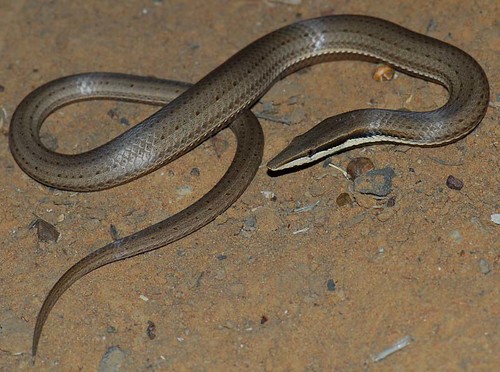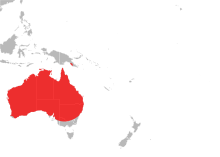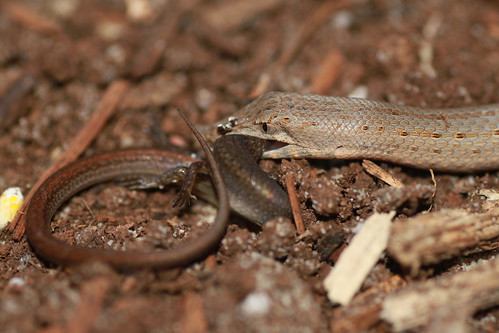Post by Ceratodromeus on Jan 9, 2016 9:59:20 GMT 5

Scientific classification
Kingdom: Animalia
Phylum: Chordata
Subphylum: Vertebrata
Class: Reptilia
Order: Squamata
Suborder: Lacertilia
Family: Pygopodidae
Genus: Lialis
Species: L. burtonis
Description
Like most other legless lizards, L. burtonis has a serpentine body plan. The head is elongated and wedge shaped, and the teeth are small, sharp, and recurved. The eyes are small with an elliptical pupil. Coloration of the species varies throughout the geographic range, from a dark grey to an orange-tan. Light to dark Striping can also be found on most individuals. The species is characterized by black or white striping that runs from the snout to the nape of the neck. Females tend to be larger then the males,, averaging roughly 21cm(8.2in) in snout-vent length. Males average the shorter 17cm(6.6in) in snout-vent length, but typically have longer tales then the females{1}. Large representatives of the species can measure as much as 27.5cm(10.8in) in snout-vent length{2}. The species cannot blink to rid their eye of debris, so, like the geckos they descended from, they have a long tongue which they use to clean their eyes.

Geographic range
Burton's legless lizard can be found throughout most of mainland Australia, but is absent throughout southern Australia (namely Tasmania). It can be found throughout a range of habitats from deserts to rainforests, where it spends most of its time foraging through habitat substrate. The leaf litter serves as an important microhabitat for the species, as it allows these legless lizards to ambush prey and avoid overheating.

Dietary habits
Records for the diet of L. burtonis suggest that it is a lizard specialist. Unique in lizards, L. burtonis is known to utilize caudal luring{3} -- in which the tail is wriggled in such a manner that in induces prey animals to come within striking range. Being non-venomous, and not being able to constrict its prey, Burton's legless lizard has come up with an effective way to take down prey. Lizards are struck on the head or neck. Retraction of the eye is common when contact is made with prey - this is to reduce chances of injury to the eye. Prey is held firmly until it stops struggling{4}. Noted prey species include Bynoe's gecko(Heteronotia binoei), Slender rainbow skinks(Carlia gracilis), Spalding's ctenotus(Ctenotus spaldingi), Northern barr-lipped skink(Eremiascincus (G.) isolepis), and five-lined slider (Lerista carpentariae){1}.

Reproduction
Reproduction occurs annually, with mating occuring from September to October, and the eggs being laid from November to January. Clutch size for burton's legless lizard is typically small, ranging from 1-3 eggs, with a typical clutch size being two. Females can produce more then one clutch of eggs in one season.{1,5}
References
{1}SHINE, Michael WALL Richard. "Ecology and Behaviour of Burtons Legless Lizard (Lialis burtonis, Pygopodidae) in Tropical Australia." Asian Herpetological Research 4.1 (2015).
{2} Patchell, F. C., and R. Shine. "Hinged teeth for hard‐bodied prey: a case of convergent evolution between snakes and legless lizards." Journal of Zoology 208.2 (1986): 269-275.
{3} Murray, B. A., S. D. Bradshaw, and D. H. Edward. "Feeding behavior and the occurrence of caudal luring in Burton's pygopodid Lialis burtonis (Sauria: Pygopodidae)." Copeia (1991): 509-516.
{4} Wall, Michael, and Richard Shine. "Dangerous food: lacking venom and constriction, how do snake‐like lizards (Lialis burtonis, Pygopodidae) subdue their lizard prey?." Biological Journal of the Linnean Society 91.4 (2007): 719-727.
{5} Patchell, Frederick C., and Richard Shine. "Food habits and reproductive biology of the Australian legless lizards (Pygopodidae)." Copeia (1986): 30-39.


